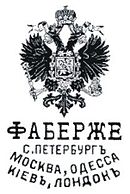art.wikisort.org - Museum
The Fabergé Museum in Saint Petersburg (Russian: Музей Фаберже в Санкт-Петербурге) is a privately owned museum in Saint Petersburg, Russia. It was established by Viktor Vekselberg and his Link of Times foundation in order to repatriate lost cultural valuables to Russia.[1] The museum is located in central Saint Petersburg at the Naryshkin-Shuvalov Palace (21, Fontanka River Embankment) on the Fontanka River.[2] The museum's collection contains more than 4,000 works of decorative applied and fine arts, including gold and silver items, paintings, porcelain and bronze. A highlight of the museum's collection is the group of nine Imperial Easter eggs created by Fabergé for the last two Russian Tsars.[3]
Музей Фаберже в Санкт-Петербурге | |
 | |
 | |
| Established | 19 November 2013 |
|---|---|
| Location | Naryshkin-Shuvalov Palace 21, Fontanka River Embankment Saint Petersburg, Russia |
| Collection size | 4,000+ items |
| Founder | Viktor Vekselberg |
| Director | Vladimir Voronchenko |
| Owner | The Link of Times Cultural-Historical Foundation |
| Website | fabergemuseum.ru |


History
The idea of creating a special museum devoted to the creative work of the great Russian jeweler Peter Carl Fabergé came to the Link of Times foundation after the purchase by Viktor Vekselberg in 2004 of a unique collection of Fabergé masterpieces that had been owned by the late Malcolm Forbes.[4] Since then, the Link of Times foundation began building a collection of Russian decorative applied and fine arts, which contains more than 4,000 works.[3] All of the Imperial Easter eggs in the museum's collection are connected to the rule and personal life of the last two Russian emperors: Alexander III and Nicolas II.
The Link of Times foundation began restoring the 18th-century Naryshkin-Shuvalov Palace (which is rented by the foundation) in St. Petersburg in 2006, with the goal of opening the museum in the palace.[5] A significant amount of work was done over seven years to recreate the historical appearance of the palace. This was the first full-fledged restoration of the palace in its entire 200-year history. The official opening ceremony of the Fabergé Museum took place on 19 November 2013.[6]
The collection
The Fabergé Museum's collection has nine Imperial Easter eggs that were made to the order of the last two Romanov Tsars. The eggs were bought by Vekselberg in 2004 from the family of the American newspaper magnate Malcolm Forbes. He purchased them just before they came up for auction, paying $100 million for the Forbes family's entire Fabergé collection.[7][3]
In total, there are fifteen Fabergé eggs in the Blue Room of Naryshkin-Shuvalov Palace, as well as a miniature picture frame in the form of a heart – the surprise from the lost Mauve egg of 1897.[8]
List of Imperial Easter eggs
- First Hen egg
- Renaissance egg
- Rosebud egg
- Coronation egg
- Lilies of the Valley egg
- Cockerel egg
- Fifteenth Anniversary egg
- Bay Tree egg
- Order of St. George egg
- First Hen egg
- Renaissance egg
- Rosebud egg
- Coronation egg
- Lilies of the Valley egg
- Cockerel egg
- Fifteenth Anniversary egg
- Bay Tree egg
- Order of St. George egg
List of other Fabergé eggs
- Kelch Hen egg
- Kelch Chanticleer egg
- Duchess of Marlborough egg
- Resurrection egg
- Scandinavian egg
- Spring Flowers egg
- Kelch Hen egg
- Kelch Chanticleer egg
- Duchess of Marlborough egg
- Resurrection egg
- Scandinavian egg
See also
- List of museums in Saint Petersburg
- Fabergé Museum in Baden-Baden
References
- "Home Page". The Link of Times foundation. Retrieved 15 August 2014.
- "A museum for the world's most expensive eggs". WorldGuide. Archived from the original on 19 August 2014. Retrieved 15 August 2014.
- Sazonov, Alexander (30 August 2019). "Sanctioned Billionaire Transforms Russian Palace Into a Faberge Mecca". Bloomberg.com. Retrieved 8 September 2020.
- Emily Laurence Baker (5 July 2014). "Fabergé Museum: The jewels in St Petersburg's crown". The Independent. Retrieved 15 August 2014.
- Fabergé Museum - General Information, Fabergé Museum website, retrieved March 6, 2015
- The Fabergé Museum has officially opened in the Shuvalov Palace in St. Petersburg, Official website of the Link of Times foundation, archived from the original on February 4, 2017, retrieved March 6, 2015
- Faberge Museum in St. Petersburg, Guide to St Petersburg Russia - StPetersburgRussia.ru, retrieved June 6, 2015
- "Absolutely Fabergé: Easter eggs with a difference". Lonely Planet. Retrieved 15 August 2014.
- Faberge's New Home in Russia - Video about the museum - WKYC-TV
External links
- Fabergé Museum - official website
- The Link of Times Cultural-Historical Foundation (archived from the original)
На других языках
[de] Fabergé-Museum
Das Fabergé-Museum in Sankt Petersburg ist ein von dem russischen Oligarchen Wiktor Wekselberg gegründetes und von seiner Link of Times Foundation getragenes privates Museum. Es dient der Ausstellung russischen Kulturguts, das von der Sowjetunion zur Devisenbeschaffung in das Ausland verkauft wurde.[1] Das Museum befindet sich im Herzen von Sankt Petersburg im historischen Schuwalow-Palais am Ufer der Fontanka. Die Sammlung des Museums umfasst mehr als 4000 Objekte, darunter Gemälde, Goldschmiedearbeiten, Silbergeschirr, Bronzen und Porzellan. Herausragende Stücke sind neun „kaiserliche“ Fabergé-Eier, die in der Werkstatt Peter Carl Fabergés für die beiden letzten russischen Zaren Alexander III. und Nikolaus II. angefertigt wurden.[2]- [en] Fabergé Museum in Saint Petersburg
[ru] Музей Фаберже в Санкт-Петербурге
Музей Фаберже — частный музей в Санкт-Петербурге, расположен во дворце Нарышкиных-Шуваловых. Обладает не имеющим аналогов собранием русского ювелирного и декоративно-прикладного искусств XIX—XX вв. Наиболее ценные и известные предметы в коллекции музея — 9 императорских пасхальных яиц, созданных фирмой Карла Густавовича Фаберже. В коллекции музея, в том числе, находятся первое и последнее из императорских яиц.Другой контент может иметь иную лицензию. Перед использованием материалов сайта WikiSort.org внимательно изучите правила лицензирования конкретных элементов наполнения сайта.
WikiSort.org - проект по пересортировке и дополнению контента Википедии














